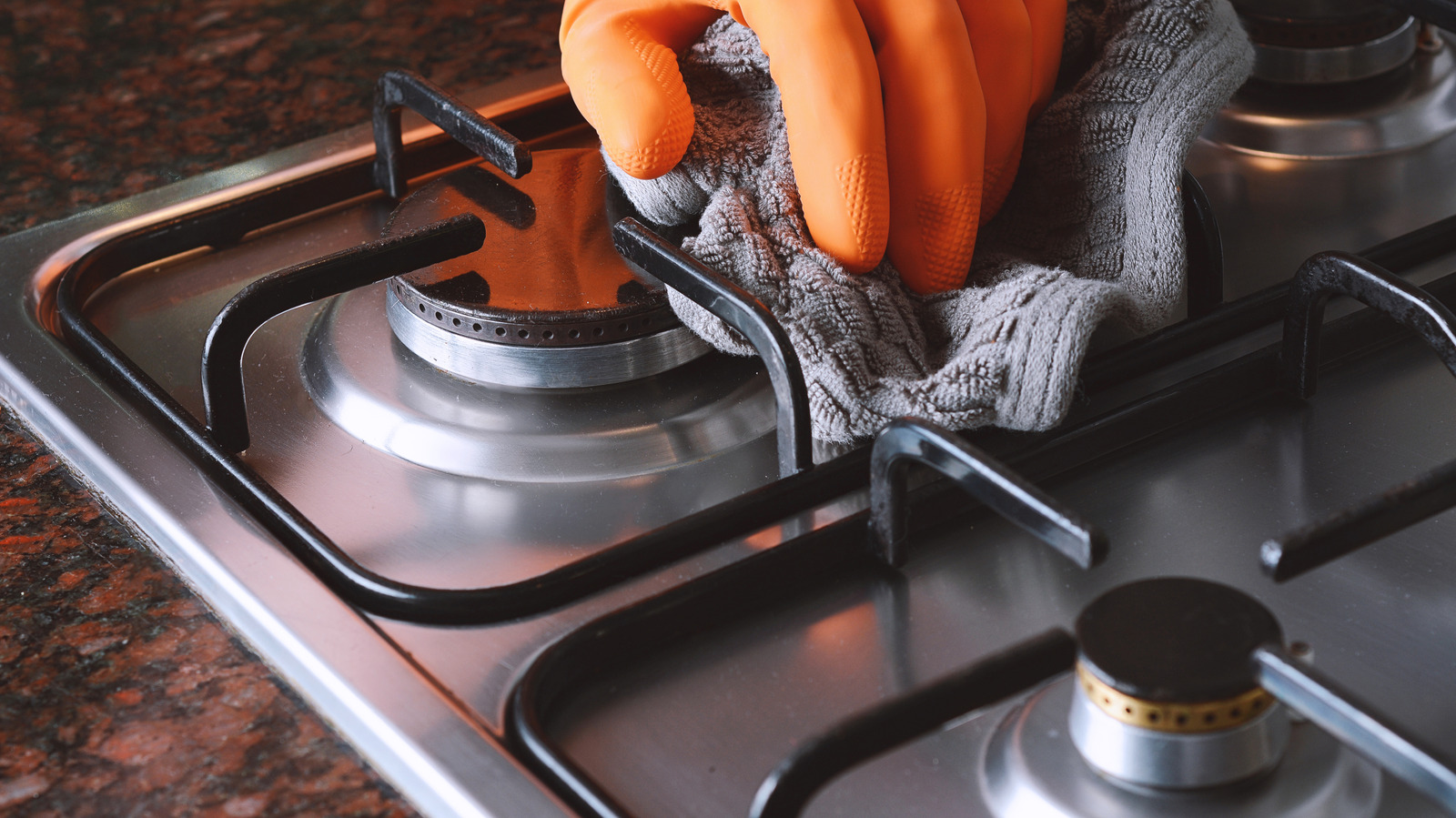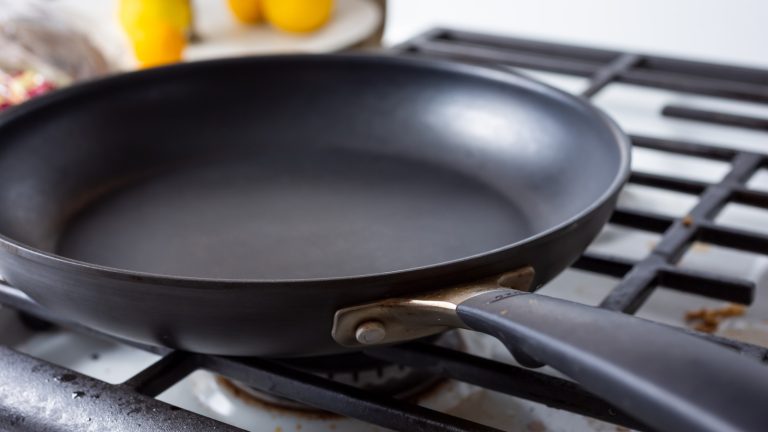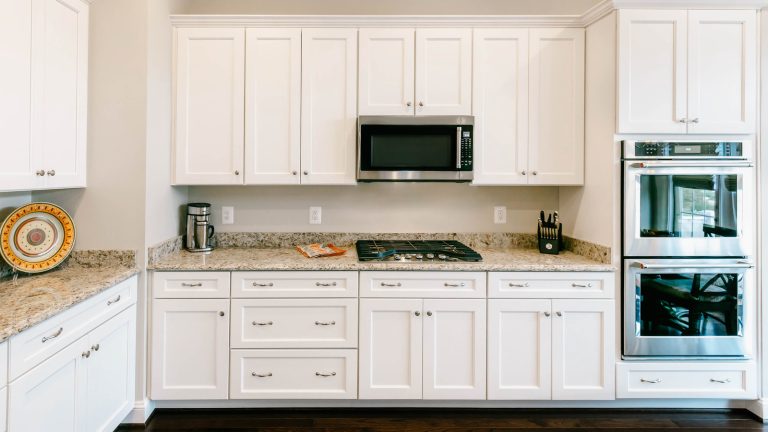Your stove’s burners and the space underneath the stovetop can quickly become hiding places for crumbs, grease, and other unpleasant cooking debris. Letting this debris remain can increase the risk of a grease fire and also damage your burners. Getting into the habit of cleaning your stovetop after cooking and doing a deep clean every few months will keep it from getting so dirty that it’s a nightmare to clean. If you procrastinate about doing certain kitchen chores because they’re irritating and time consuming, you will be happy to hear about the hidden stove feature that makes cleaning much easier: Lifting up the whole stovetop so that you can clean underneath.
Many stovetops are designed to be lifted up so that you can get to the grime trapped beneath. You can figure out if your stove has this feature by checking the user manual or Googling the brand and model of your stove. For instance, according to GE Appliances, electric ranges with a porcelain top manufactured after 1992 have a lift-up feature that allows you to access the subtop for cleaning. Some gas ranges also have whole hinged grates or tops, like the Whirlpool Gas Cooktops with EZ-2-Lift Hinged Cast-Iron Grates. If you have a sealed burner stove, however, do not try to lift up the top. Sealed burner stoves are already enclosed to prevent debris from getting underneath the range top, and trying to force it open could damage the stove’s gas lines. You should also avoid other common mistakes when cleaning your stove burners, like forgetting to detach the burner coils properly.
Stovetop cleaning tips that make the task faster and easier
Ideally, you should clean your stovetop after every use to remove spills, grease, and crumbs. Make sure the burners are turned off and the stove is cool to the touch. The best tools to use are a microfiber cloth, plastic scraper, and a non-abrasive sponge. Avoid using oven cleaners or bleach on your stovetop, as that is a kitchen cleaning mistake that could get toxic; instead, use dish soap and warm water or a specialized stovetop cleaner. And if you’re working with a gas appliance, don’t overlook this important gas stove maintenance task: Cleaning the burner channels underneath the burner caps. Use a straw cleaner or pipe cleaner to clear out gunk that could cause blockages. You should clean your stove burners and stove drip pans regularly as well.
Don’t neglect cleaning behind and underneath your stove as well as the range hood. When dirt, dust, fats, and other debris collects behind your stove, they can become a fire hazard. To minimize the amount of junk that falls between your stove and the wall or edge of the countertop, consider covering the gap with foil. Grease and dust on your range hood can affect its ability to properly ventilate cooking fumes and smoke, allowing them to come back into your home. Eventually this can cause poor indoor air quality and respiratory issues. Clean your range hood and vent every one to three months.






